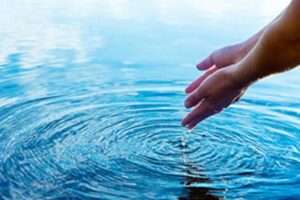Response to a 2015 SEACC petition acknowledges Alaskans’ high fish consumption rates and disproportionate health impacts

The Environmental Protection Agency has demanded changes to the Alaska Department of Environmental Conservation’s water quality standards within six to 12 months. The current human health criteria are based on inaccurate assumptions — Alaskans eat far more than the 6.5 gram per day default rate for the general population in 1992, which means greater exposure to harmful pollutants.
“The health of Alaskans should be a top priority for the State, so new water quality standards can’t come soon enough,” said Maggie Rabb, executive director of the Southeast Alaska Conservation Council. “SEACC’s work to protect Alaska’s waters is also about protecting the people who rely on it for sustenance.”
SEACC submitted a petition in 2015 requesting revision of the “remarkably outdated” fish consumption rate used by the State of Alaska, suggesting a proposed rate of 175 grams per day by Alaskans relying on subsistence and traditional foods. The EPA had updated its general rate to 22 grams per day in 2014.
The 6.5 gram per day FCR used by the State was acknowledged as “not reflective of the actual fish consumption rate by the general or certain sub-populations of Alaskans” in a 2016 response from the then director of the Division of Water to SEACC, as cited in the EPA Administrator’s Determination dated June 5, 2024.
“The fact that Alaskans consume far more fish than most other US populations means we deserve and require more stringent water quality criteria, because higher fish consumption rate increases exposure to any contaminants that may be present in those fish,” SEACC’s petition reads.
SEACC was one of a number of entities pushing the EPA for water quality standards reflective of Alaskans’ real fish consumption rates. Another petitioner was Chickaloon Native Village. In more recent years, the Seldovia Village Tribe and Sun’aq of Kodiak conducted seafood consumption surveys for Cook Inlet and Kodiak Tribes respectively.
The EPA noted that revisions to Alaska’s human health criteria have been identified as a priority action for more than a decade, but new criteria have not been proposed for adoption.
“This Determination makes clear that new and revised HHC are necessary in Alaska to meet (Clean Water Act) requirements and that the EPA is prepared to promulgate such criteria unless the state adopts new and revised HHC that meet CWA requirements,” reads the determination, signed by Acting Assistant Administrator Bruno Pigott.
The EPA has set a timeline of 6-12 months for the changes, “given the readily available fish consumption information” and has committed to working with the state of Alaska to ensure the human health criteria are “protective of applicable designated uses, based on sound scientific rationale and responsive to the needs of Alaska’s residents.”
